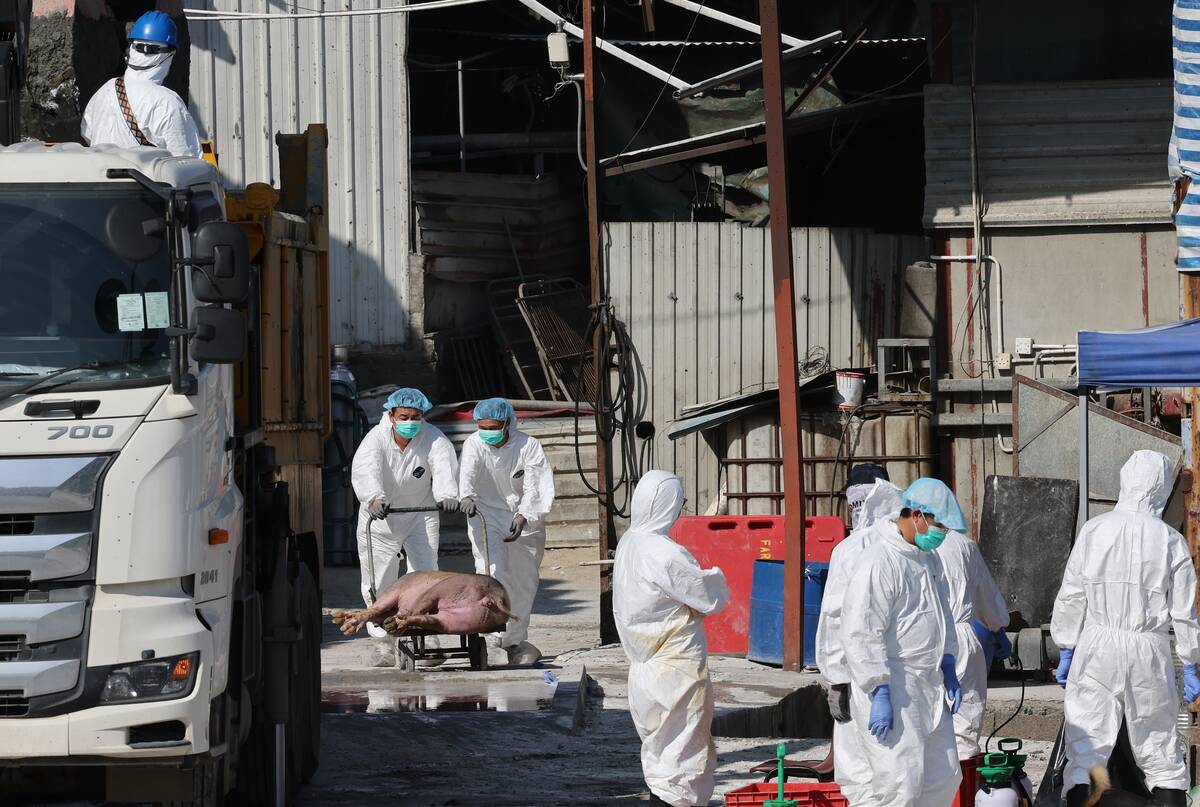SWIFT CURRENT, Sask. – Canadian beef could be heading to Japan this fall, but western Canadian beef might not.
Producers attending the Saskatchewan Stock Growers Association annual meeting here last week heard that unless they can verify the age of their cattle, the beef won’t be eligible to go. Many admitted they hadn’t recorded the birth dates of their 2004 calves.
Canada Beef Export Federation chair Ben Thorlakson said the two countries are nearing agreement on shipments of boneless, age-verified beef from cattle younger than 21 months.
Read Also

Mixed results on new African swine fever vaccine
The new African swine fever vaccine still has issues, but also gave researchers insight into how virus strain impacts protection against the deadly pig disease.
“It appears that this fall we’ll have access but the qualifications that are placed on that access for beef from North America are such that we have very little product that will qualify,” he said in an interview. “We have beef out of Quebec that is birth date verified but unfortunately that doesn’t count for a lot of cattle when you look at our total herd across Canada because they only have 2.5 percent of our beef herd.”
He said the birth dates of about 14,000 Canadian cattle have been registered but most of them are 2005 calves. That means a limited number of cattle would be available this fall to fill a market.
Thorlakson said Ito-Ham, a large Japanese food importer, has talked to CBEF and the Canadian Cattlemen’s Association about ways to import Canadian beef, including that from animals older than 21 months, providing it is tested for BSE.
“What Ito-Ham suggested was that they would pay for all the costs of testing Canadian beef and then take the majority of the beef that was generated from the carcass into Japan at competitive prices,” said Thorlakson.
He said Canada has to give serious consideration to BSE testing to gain market access, especially to a country like Japan that imports 800,000 tonnes of beef each year. In 2002, 300,000 tonnes of that was from North America; 30,000 tonnes from Canada.
“It may sound a little bold but if we could consummate that deal and get a jump on our friends from the south maybe, just maybe, we could get a larger share of that market,” Thorlakson told the meeting.
He and other industry officials met with the Canadian Food Inspection Agency, prime minister Paul Martin and others in Ottawa last week to discuss BSE protocols for market access.
“CFIA is really, really not very wild about the concept of BSE testing for market access,” he said.
A CFIA spokesperson said the agency’s position has always been that there must be a scientific benefit to testing. Testing as a marketing tool is beyond the agency’s scope.
“If things were to move to the very worst situation then we might entertain it,” said media relations officer Alain Charette.
Asked what that would be, he said: “No one on earth wants our meat.”
He said CFIA’s discussions with Japan are focusing on age verification, not testing.
Thorlakson said CFIA’s mandate is to talk to regulators and develop protocols and has to put the concept on the table for other countries to take it seriously.
Later in the meeting, the membership unanimously passed a resolution calling for the SSGA, CBEF and CCA to expedite a market trial, in which cattle older than 30 months would be BSE tested for marketing purposes.
That’s a departure in thinking from last year, when many producers were nervous about testing. They feared more positive cases and false positive tests.















